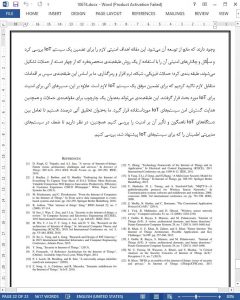Abstract
Internet of Things (IoT) has been given a lot of emphasis since the 90s when it was first proposed as an idea of interconnecting different electronic devices through a variety of technologies. However, during the past decade IoT has rapidly been developed without appropriate consideration of the profound security goals and challenges involved. This study explores the security aims and goals of IoT and then provides a new classification of different types of attacks and countermeasures on security and privacy. It then discusses future security directions and challenges that need to be addressed to improve security concerns over such networks and aid in the wider adoption of IoT by masses.
I. INTRODUCTION
Internet of Things allows electronic devices in our surrounding environment to be active participants by sharing information with other members of the network making it possible to recognise events and changes in their surroundings and to act and react autonomously mainly without any human interaction [1]. The advantages of IoT are almost limitless and its applications are changing the way we work and live by saving time and resources, and opening new opportunities for growth, innovation, and the exchange of knowledge between entities. It is predicted that by 2020 Internet of Things will greatly expand with more than 50 billion uniquely identifiable devices (excluding PCs, tablets and smartphones), which is an impressively large number [2]. However, the existence of such a large network of interconnected entities will definitely pose new security, privacy, and trust threats that put all those devices at a high risk, thus harming the affiliated users.
VII. CONCLUSION
IoT has been a major research topic for almost a decade now, where physical entities would interconnect using existing network technologies. Due to its rapid progression many threats in security and privacy exists, which hinder its development. This paper explored the security goals required for a secure IoT system, and classified its security challenges and issues using a new unique classification method consisting of four classes of attacks; Physical, Network, Software, and Encryption Attacks. Based on this classification, we then highlighted the security countermeasures needed to successfully secure an IoT system. Furthermore, future directions for security for IoT were discussed. This classification could be used as a framework to categorise attacks, as well as to guide the secure deployment of IoT systems. As future work, we aim to investigate the interaction between heterogeneous IoT devices and its impact on security. Further, we aim to investigate weaknesses in trust management systems proposed for IoT systems.











